
A Chorus Line is a 1975 musical conceived by Michael Bennett with music by Marvin Hamlisch, lyrics by Edward Kleban, and a book by James Kirkwood Jr. and Nicholas Dante.

Cy Coleman was an American composer, songwriter, and jazz pianist.

Thomas James Tune is an American actor, dancer, singer, theatre director, producer, and choreographer. Over the course of his career, he has won ten Tony Awards, the National Medal of Arts, and a star on the Hollywood Walk of Fame.
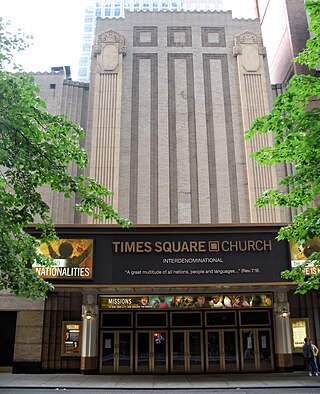
The Mark Hellinger Theatre is a church building at 237 West 51st Street in the Midtown Manhattan neighborhood of New York City, which formerly operated as a cinema and Broadway theater. Opened in 1930, the Hellinger Theatre is named after journalist Mark Hellinger and was developed by Warner Bros. as a movie palace. It was designed by Thomas W. Lamb with a modern facade and a Baroque interior. It has 1,605 seats across two levels and has been a house of worship for the Times Square Church since 1989. Both the exterior and interior of the theater are New York City landmarks.
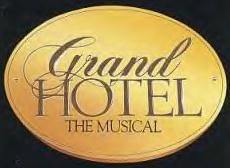
Grand Hotel is a musical in two acts with a book by Luther Davis, music and lyrics by Robert Wright and George Forrest, and additional music and lyrics by Maury Yeston.

Michael Bennett was an American musical theatre director, writer, choreographer, and dancer. He won seven Tony Awards for his choreography and direction of Broadway shows and was nominated for an additional eleven.
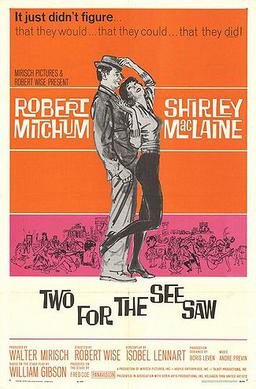
Two for the Seesaw is a 1962 American romantic-drama film directed by Robert Wise and starring Robert Mitchum and Shirley MacLaine. It was adapted from the 1958 Broadway play written by William Gibson with Henry Fonda and Anne Bancroft in the lead roles.

The Gershwin Theatre is a Broadway theater at 222 West 51st Street, on the second floor of the Paramount Plaza office building, in the Midtown Manhattan neighborhood of New York City. Opened in 1972, it is operated by the Nederlander Organization and is named after brothers George and Ira Gershwin, who wrote several Broadway musicals. The Gershwin is Broadway's largest theater, with approximately 1,933 seats across two levels. Over the years, it has hosted musicals, dance companies, and concerts.
Thomas Joseph "Thommie" Walsh III was an American dancer, choreographer, director, and author.
Wayne Louis Cilento is an American director, choreographer, actor and dancer. He is best known for originating the role of Mike in the Broadway show A Chorus Line, and later becoming one of Broadway's most prolific choreographers.
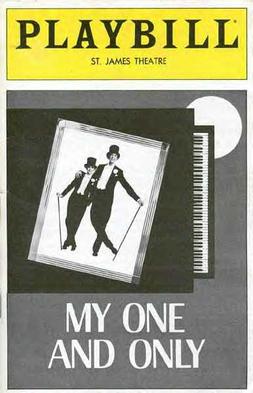
My One and Only is a musical with a book by Peter Stone and Timothy S. Mayer and music and lyrics by George and Ira Gershwin. The musical ran on Broadway and in the West End.

Baayork Lee is an American actress, singer, dancer, choreographer, theatre director, and author.

A Joyful Noise is a musical with a script by Edward Padula and music and lyrics by Oscar Brand and Paul Nassau. The 1966 Broadway production was a flop but introduced choreographer Michael Bennett in his Broadway debut.
Graciela Daniele is an Argentine-American dancer, choreographer, and theatre director.
Larry Fuller is an American choreographer, theatre director, dancer, and actor. Both a Tony Award and Drama Desk Award nominated choreographer, he best known for his work on Broadway where he notably staged the movement for the original productions of on On the Twentieth Century (1978), Sweeney Todd: The Demon Barber of Fleet Street (1979), Evita (1979), Merrily We Roll Along (1981), Is There Life After High School? (1982), and A Doll's Life (1982).
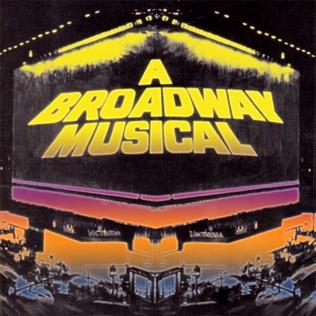
A Broadway Musical is a musical with a book by William F. Brown, lyrics by Lee Adams, and music by Charles Strouse. The Broadway production closed after 14 previews and only one performance on December 21, 1978.
The American Dance Machine was a theatrical dance company created by Lee Theodore, which played on Broadway at the Century Theatre, opening Jun 14, 1978 and in total running 199 performances. It was duplicated with a second cast for the American Dance Festival at Duke University in 1978. The show was a "Living Archive" of Broadway theatre dance; great theatre dances saved from oblivion. Films were made of the performances to preserve original Broadway choreography and can be found at the Lincoln Center Library of the Performing Arts in New York City. Broadway legend Gwen Verdon appeared a film version of the show in 1981 for Showtime. Choreographers included: Agnes De Mille, Jack Cole, Joe Layton, Michael Kidd, Ron Field, Bob Fosse, Onna White and Peter Gennaro. Featured dancers and guest artists included Janet Eilber, Carol Estey, Harold Cromer, Liza Gennaro, Patti Mariano, Nancy Chismar, Randy Skinner and Donald Young.
Tony Stevens, born Anthony Pusateri, was an American choreographer, dancer, and director who worked with, danced with, and directed many of Broadway and Hollywood's theatre-centric actors and actresses, including Chita Rivera, Martin Short, Robert Redford, and Gene Kelly.
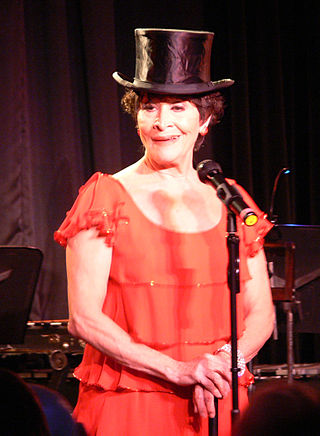
The Chita Rivera Awards for Dance and Choreography celebrates outstanding dance and choreography in theatre, both on Broadway and Off-Broadway and in film at an annual ceremony in New York City at the Skirball Center for the Performing Arts. Now carrying the namesake of two-time Tony-winning dance icon Chita Rivera, The Rivera Awards will be presented under the auspices of American Dance Machine, an organization dedicated to the preservation of great musical theatre choreography.
Two for the Seesaw is a three-act, two-person play written by William Gibson. The play opened on Broadway on January 16, 1958, at the Booth Theatre in New York and ran for 750 performances, closing on October 31, 1959. With the opening cast of Henry Fonda and Anne Bancroft, the play was directed by Arthur Penn and produced by Fred Coe. A surprise hit, Two for the Seesaw earned Anne Bancroft, making her Broadway debut, her first Tony Award for Best Featured Actress in a Play. The play was adapted into a film of the same name in 1962, directed by Robert Wise and starring Robert Mitchum and Shirley MacLaine, and was later adapted into the musical Seesaw in 1973. The play marked the Broadway debut of writer William Gibson, who would later collaborate with Penn and Coe on the play and film adaptations of The Miracle Worker, which also featured Bancroft in the lead role.












